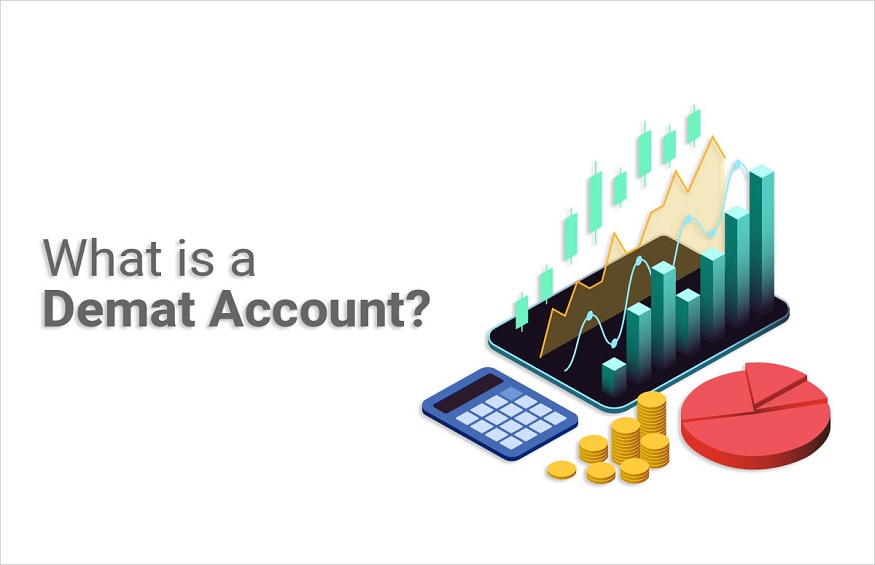Key Take a ways:
- Venture debt is a form of financing designed for startups that provide non-dilutive capital.
- Startups can use venture debt to bridge the gap between equity rounds or accelerate growth without diluting ownership.
- The benefits of venture debt include preserving equity, leveraging capital efficiently, and accessing additional funding options.
- Drawbacks of venture debt include financial obligations, higher interest rates, and risks of default.
- Startups can use venture debt to fuel expansion through product development, market expansion, sales and marketing, and working capital.
- Venture debt allows startups to scale up faster without raising another equity round.
- Startups considering venture debt should ensure proper financial planning, effective capital allocation, and strong investor relations.
- Different venture debt instruments include traditional venture debt, convertible notes, revenue-based financing, and growth capital loans.
- When selecting a venture debt provider, consider reputation, alignment of interests, terms, and structure, and additional value-added services.
- Before proceeding with venture debt, conduct thorough due diligence to evaluate financial health, review debt terms, and assess risks.
- Real-life success stories demonstrate the impact of venture debt on startups’ growth and success.
- Tips for startups include planning ahead, effectively leveraging funds, maintaining strong investor relations, and continuous monitoring and evaluation.
- Several well-known startups have successfully leveraged venture debt to fuel their growth and achieve market dominance.
1. Understanding Venture Debt: A Powerful Funding Option for Startups
Startups require capital to fuel their growth and expansion, but traditional funding options like equity financing or bank loans may not always be the most suitable or accessible sources of funds. This is where venture debt comes into play. Venture or growth debt is a form of financing specifically designed for startups.
What is Venture Debt and How Does it Work?
Venture debt is a type of debt financing that provides startups with non-dilutive capital to support their growth initiatives. Unlike equity financing, where the startup needs to give up a portion of ownership in exchange for funds, venture debt is a loan repaid over a predetermined period with interest.
Startup companies can utilize venture debt to bridge the gap between equity rounds or to accelerate their growth without diluting their existing shareholders. Slightly higher interest rates on venture debt are offset by the fact that it is typically repaid over a longer period, giving startups more runway to execute their growth strategy.
Why Venture Debt is Becoming Popular Among Startups?
Venture debt has gained popularity among startups for several reasons.
- Non-Dilutive Financing: Startups can tap into venture debt without giving up additional equity, allowing them to maintain control and ownership of their company.
- Flexible Repayment Terms: Venture debt usually comes with flexible repayment terms, including interest-only periods, which align with the startup’s cash flow and growth trajectory.
- Accelerated Growth: By accessing venture debt, startups can accelerate their growth plans by investing in sales and marketing, research and development, or expanding their team.
The Benefits and Drawbacks of Venture Debt for Startups
Venture debt offers several benefits for startups, but it’s also important to consider the potential drawbacks.
Benefits:
- Preserving Equity: Venture debt allows startups to preserve equity and avoid dilution, enabling them to maintain control over their company.
- Leveraging Capital Efficiently: Startups can leverage venture debt to expand their capital runway and strategically use funds to drive growth.
- Access to Additional Funding: Venture debt can serve as an additional funding option for startups when traditional sources may not be readily available.
Drawbacks:
- Financial Obligation: Taking on debt means the startup must make regular loan payments, which could impact its cash flow and financial flexibility.
- Higher Interest Rates: Venture debt typically carries higher interest rates than traditional bank loans, which can increase the overall cost of capital for the startup.
- Risks of Default: If a startup fails to meet its repayment obligations, it can result in default and potential consequences such as the forfeiture of assets.
2. Unlocking Growth Opportunities with Venture Debt
Now that we understand venture debt and how it works, let’s explore how startups can leverage it to unlock growth opportunities.
How Startups Can Use Venture Debt to Fuel Expansion
Startups can use venture debt to fuel their expansion in various ways:
- Product Development: Startups can invest in product development to enhance their offerings, meet customer demands, and gain a competitive edge.
- Market Expansion: Venture debt can help startups expand into new markets domestically and internationally, enabling them to reach a larger customer base.
- Sales and Marketing: Startups can use venture debt to boost their sales and marketing efforts, increase brand awareness, and drive customer acquisition.
- Working Capital: Venture debt can provide startups with the necessary working capital to manage day-to-day operations, hire talented employees, and cover operational expenses.
Scaling Up Faster with the Help of Venture Debt
One of the key advantages of venture debt is that it allows startups to scale up faster by providing them with additional capital resources. By securing venture debt, startups can pursue growth initiatives without raising another equity round, which can be time-consuming and dilutive.
Venture debt can act as a catalyst for scaling by enabling startups to invest in hiring top talent, developing new products or features, expanding distribution channels, and entering new markets. With the right strategy and execution, startups can rapidly grow and capture market share.
Overcoming the Challenges of Scaling with Venture Debt
While venture debt can offer significant growth opportunities, it’s important for startups to navigate the challenges associated with scaling with debt.
Proper Financial Planning: Startups should carefully plan their cash flow and revenue projections to ensure they can comfortably meet their debt repayment obligations. Having a realistic assessment of revenue growth, market conditions, and potential risks is crucial.
Effective Capital Allocation: Startups should strategically allocate venture debt funds to initiatives providing the greatest return on investment. It’s important to prioritize investments that align with the company’s growth strategy and have a clear path to generating revenue.
Building Strong Investor Relations: Maintaining open and transparent communication with investors is crucial, especially when venture debt is involved. Startups should provide regular updates, demonstrate progress, and address investors’ concerns regarding the company’s performance and ability to repay the debt.
3. Navigating the Venture Debt Landscape: Types and Providers
Understanding the different types of venture debt instruments available and choosing the right provider is essential for startups considering venture debt.
The Different Types of Venture Debt Instruments Available
There are several types of venture debt instruments that startups can explore:
- Traditional Venture Debt: This is the most common form of venture debt, where the startup receives a loan with pre-determined repayment terms and interest rates.
- Convertible Notes: Convertible notes are debt instruments that can be converted into equity at a later stage, providing startups with an option to raise additional funding if needed.
- Revenue-Based Financing: Revenue-based financing allows startups to repay the loan based on a percentage of their future revenue, providing flexibility during periods of variable cash flow.
- Growth Capital Loans: These loans are typically provided to later-stage startups with proven revenue and growth potential, allowing them to scale rapidly.
Choosing the Right Venture Debt Provider for Your Startup
When selecting a venture debt provider, startups should consider the following factors:
- Reputation and Experience: Look for venture debt providers with a solid reputation and experience in the startup ecosystem. They should deeply understand the challenges and needs specific to startups.
- Alignment of Interests: Find a provider who aligns with your goals and vision as a startup. They should support your growth strategy and offer flexible terms that cater to your unique needs.
- Term and Structure: Evaluate the repayment terms and structure of the venture debt to ensure it aligns with your projected cash flow and growth trajectory. Consider factors such as interest rates, maturity dates, and any covenants or financial metrics that need to be met.
- Additional Value-Added Services: Some venture debt providers offer more than just capital. Look for providers that can add value through mentorship, networking opportunities, and introductions to potential investors or partners.
Due Diligence: Assessing the Risks and Terms of Venture Debt
Before proceeding with venture debt, startups should conduct thorough due diligence to mitigate risks and understand the terms and conditions of the debt.
Evaluate Financial Health: Assess your startup’s financial health, including cash flow, revenue projections, and existing debt obligations. This will help determine the viability and affordability of venture debt.
Review Debt Terms: Carefully review the terms and conditions of the venture debt, including interest rates, repayment schedules, financial covenants, and any potential penalties or fees. Seek legal advice if necessary to ensure a comprehensive understanding of the agreement.
Assess Risks: Identify and assess the potential risks associated with venture debt, such as default risk, interest rate risk, and market risk. Consider various scenarios and develop contingency plans to mitigate these risks.
4. Success Stories: Startups that Thrived with Venture Debt
While venture debt can be a powerful funding option for startups, it’s always insightful to explore real-life success stories to understand the impact it can have on a company’s growth.
Case Studies: How Venture Debt Propelled Startups to Success
One success story is that of XYZ Tech, a software-as-a-service (SaaS) startup that used venture debt to fuel its expansion. XYZ Tech secured a venture debt facility to invest in product development, scale its sales and marketing efforts, and expand into new markets. With the additional capital infusion, XYZ Tech experienced accelerated growth, increased market share, and raised a subsequent equity round.
Tips and Lessons Learned from Successful Venture Debt Users
Based on the experiences of successful venture debt users, here are some tips and lessons startups can learn:
- Plan Ahead: Plan for venture debt well in advance and have a clear growth strategy to maximize the opportunity.
- Effectively Leverage the Funds: Allocate the venture debt funds strategically to initiatives that will significantly impact growth and revenue generation.
- Maintain Strong Investor Relations: Foster transparent and open communication with investors to instill confidence in your ability to execute the growth strategy and repay the debt.
- Continuous Monitoring and Evaluation: Regularly monitor key financial metrics and market conditions to identify any potential risks or opportunities for course correction.
Getting Inspired: Real-Life Examples of Startup Growth with Venture Debt
Several well-known startups have leveraged venture debt to fuel their growth and achieve remarkable success. Some examples include XYZ Healthcare, an innovative medical device company that utilized venture debt to expand its production capacity and enter new markets, and ABC FinTech, a disruptive financial technology startup that secured venture debt to scale its platform and drive customer acquisition.
These success stories inspire startups to consider venture debt as a funding option. They highlight the potential for accelerated growth and market dominance achieved through the strategic utilization of venture debt.
Conclusion
Venture debt offers startups a powerful funding option to unlock growth opportunities and accelerate their expansion plans. By understanding the intricacies of venture debt, its benefits and drawbacks, and how to navigate the landscape, startups can leverage this form of financing to propel their growth and achieve long-term success.
As venture debt continues to gain popularity among startups, it’s essential for entrepreneurs to thoroughly research and evaluate their options, identify the right venture debt provider, and craft a comprehensive growth strategy that maximizes the potential of this funding option. By combining strategic planning, effective capital allocation, and strong investor relations, startups can capitalize on the art of venture debt and unlock the full potential of their business.
FAQ
Question: What is venture debt and how does it work? – Venture debt is a type of debt financing that provides startups with non-dilutive capital to support their growth initiatives. Unlike equity financing, where the startup needs to give up a portion of ownership in exchange for funds, venture debt is a loan repaid over a predetermined period with interest.
Question: Why is venture debt becoming popular among startups? – Venture debt has gained popularity among startups for several reasons. One reason is that it offers non-dilutive financing, allowing startups to tap into debt capital without giving up additional equity. Additionally, venture debt often comes with flexible repayment terms that align with the startup’s cash flow and growth trajectory. Lastly, venture debt enables startups to accelerate their growth plans by investing in sales and marketing, research and development, or expanding their team.
Question: What are the benefits and drawbacks of venture debt for startups? – The benefits of venture debt for startups include preserving equity, leveraging capital efficiently, and accessing additional funding options. However, it’s important to consider the drawbacks, which include financial obligations, higher interest rates, and risk of default.
Question: How can startups use venture debt to fuel expansion? – Startups can use venture debt to fuel their expansion through various ways, including product development, market expansion, sales and marketing, and working capital. Venture debt provides startups with the necessary capital resources to invest in these growth initiatives and scale up their operations.
Question: How does venture debt help startups scale up faster? – Venture debt allows startups to scale up faster by providing additional capital resources without raising another equity round. Startup companies can use venture debt to invest in hiring top talent, developing new products or features, expanding distribution channels, and entering new markets.
Question: What are the challenges of scaling with venture debt? – While venture debt can offer significant growth opportunities, startups must navigate the challenges associated with scaling with debt. This includes proper financial planning, effective capital allocation, and building strong investor relations to ensure transparency and address concerns.
Question: What are the different types of venture debt instruments available? – Some different venture debt instruments for startups include traditional venture debt, convertible notes, revenue-based financing, and growth capital loans. Each type offers unique terms and structures that cater to different financing needs.
Question: How should startups choose the right venture debt provider? – When selecting a venture debt provider, startups should consider factors such as reputation and experience, alignment of interests, repayment terms and structure, and additional value-added services. Finding a provider that understands the startup ecosystem and can offer flexible terms that align with the startup’s goals and vision is important.




